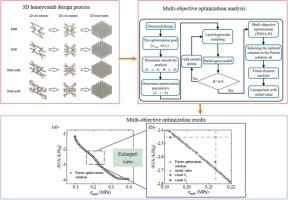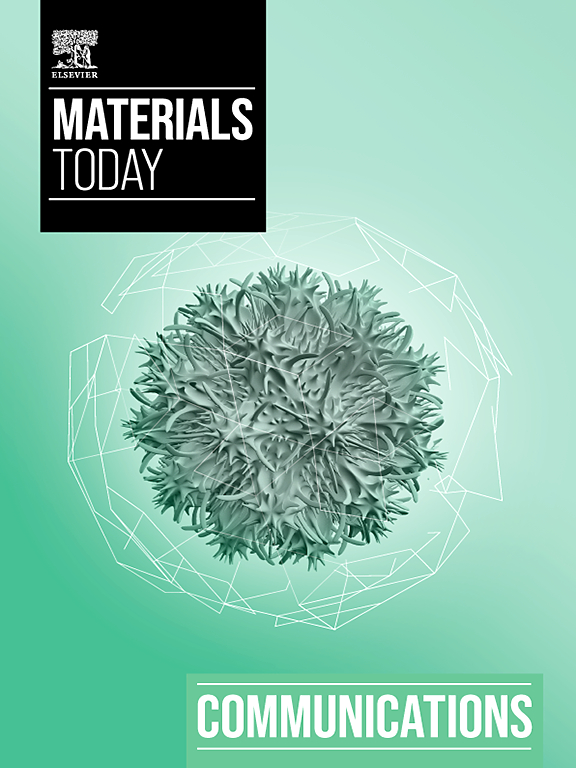三维仿生负泊松比蜂窝的能量吸收特性与多目标优化
IF 4.5
3区 材料科学
Q2 MATERIALS SCIENCE, MULTIDISCIPLINARY
引用次数: 0
摘要
本文介绍了一种具有负泊松比的新型仿生细胞元件,它源自传统的重入六边形细胞元件。通过在二维(2D)细胞元件中加入旋转,形成了三维(3D)细胞元件,其机械性能得到了增强。三维蜂窝由三维单元元件阵列而成,并通过在蜂窝中添加纵向肋条而得到增强。本研究采用 ABAQUS/EXPLICIT 软件研究各种压缩速度与特定系统的耐撞性和能量吸收能力之间的相关性。分析了不同压缩速度对三维蜂窝变形模式和能量吸收性能的影响。模拟结果表明,新型仿生负泊松比蜂窝比传统的再入六边形蜂窝具有更好的耐撞性和能量吸收能力。比较分析了不同蜂窝的标称应力应变曲线和单位质量蜂窝吸收的能量,并利用 NSGA-II 遗传算法对蜂窝的峰值应力和单位质量吸收的能量进行了多目标优化分析。结果表明,当峰值应力与初始蜂窝相同时,优化后的蜂窝可将单位质量吸收的能量提高 7.5%,而当单位质量吸收的能量相同时,峰值应力可降低 9.6%。本文章由计算机程序翻译,如有差异,请以英文原文为准。

Energy absorption characteristics and multi-objective optimization of 3D bionic negative Poisson’s ratio honeycomb
This paper introduces a new bionic cell element with a negative Poisson’s ratio, which is derived from the traditional re-entrant hexagonal cell element. By incorporating rotation into the two-dimensional (2D) cell element, a three-dimensional (3D) cell element is formed, which exhibits enhanced mechanical properties. The 3D honeycomb is obtained by arraying the 3D cell elements and is enhanced by adding longitudinal ribs to the honeycomb. The present study employs the ABAQUS/EXPLICIT software to investigate the correlation between various compression velocities and the crashworthiness and energy absorption capacity of a given system. The effects of different compression velocities on the 3D honeycomb deformation pattern and energy absorption performance are analyzed. The simulation results show that the new bionic negative Poisson’s ratio honeycomb has better crashworthiness and energy absorption capacity than the traditional re-entrant hexagonal honeycomb. The nominal stress-strain curves of different honeycombs and the energy absorbed per unit mass of honeycomb are compared and analyzed, and the NSGA-II genetic algorithm is used to perform a multi-objective optimization analysis of the peak stress and energy absorbed per unit mass of honeycomb. The results show that the optimized honeycomb can increase the absorbed energy per unit mass by 7.5 % when the peak stress is the same as the initial honeycomb, while the peak stress can be reduced by 9.6 % when the absorbed energy per unit mass is the same.
求助全文
通过发布文献求助,成功后即可免费获取论文全文。
去求助
来源期刊

Materials Today Communications
Materials Science-General Materials Science
CiteScore
5.20
自引率
5.30%
发文量
1783
审稿时长
51 days
期刊介绍:
Materials Today Communications is a primary research journal covering all areas of materials science. The journal offers the materials community an innovative, efficient and flexible route for the publication of original research which has not found the right home on first submission.
 求助内容:
求助内容: 应助结果提醒方式:
应助结果提醒方式:


